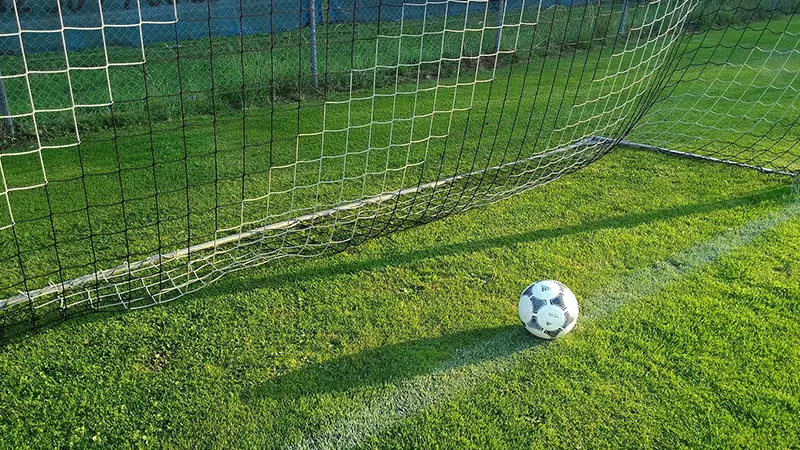In the fast-paced world of soccer, the disallowed goal rule often sparks controversy and heated debates among players, coaches, and fans alike. This rule, designed to ensure fair play and uphold the integrity of the game, can turn the tide of a match in an instant.
Whether it’s due to offside calls, fouls, or other infractions, the decision to disallow a goal can be a game-changer that leaves supporters on the edge of their seats.
Understanding the intricacies of the disallowed goal rule is crucial for both players and spectators to grasp the nuances of this beloved sport.
From VAR (Video Assistant Referee) interventions to split-second judgments by on-field officials, every decision regarding a disallowed goal can have far-reaching consequences.
Stay tuned as we delve deeper into the world of soccer’s disallowed goal rule and unravel the impact it has on the beautiful game.
Exploring the Offside Rule
When it comes to soccer, understanding the offside rule is crucial as it often leads to disallowed goals. This rule plays a significant role in shaping the outcomes of matches.
How the Offside Rule Leads to Disallowed Goals
The offside rule in soccer can lead to disallowed goals when an attacking player receives the ball beyond the second-last defender, excluding the goalkeeper, at the moment the ball is played.
If a player is in an offside position when the ball is passed to them and they subsequently score a goal, it is deemed invalid by the match officials.
For example, if a striker is standing behind the last defender when a teammate passes the ball to them, and then they score, the goal would likely be disallowed due to offside infringement.
Exceptions and Common Misconceptions
The offside rule is often perceived as simple, yet exceptions and misunderstandings can complicate its application. A player can be onside by being level with the second-last defender, not necessarily the last two defenders.
Further exceptions to the rule can occur when a player receives the ball directly from specific actions like a goal kick, throw-in, or corner kick, thus sidestepping offside calls.
Review of Other Causes for Disallowing Goals
Beyond offside calls, various infractions like fouls and handball offenses can lead to disallowed goals in soccer matches, impacting game outcomes significantly.
Fouls and Infringements
When a player commits a foul or infringement in the process of scoring a goal, match officials have the authority to disallow the goal. Common fouls include pushing, holding, or tripping an opponent in a manner that violates the rules of the game.
Additionally, handball offenses by the attacking team leading to a goal are also grounds for disallowance. Understanding these fouls is crucial for players to avoid costly penalties that could nullify a goal-scoring opportunity.
Ball Out of Play Before Crossing the Goal Line
Another cause for disallowing goals is when the ball is out of play before crossing the goal line. If the ball has completely crossed the boundary lines of the field, whether on the ground or in the air, before entering the goal, the referees will rule it as out of play.
This situation commonly occurs when the ball goes out for a goal kick, corner kick, or throw-in before a goal is scored, resulting in the goal being disallowed.
Players need to be aware of these scenarios to prevent unnecessary celebrations that may be overturned due to the ball being out of play.
The Role of Technology in Officiating
Technology plays a crucial role in modern soccer officiating, assisting match officials in making more accurate and fair decisions. One of the significant technological advancements in soccer officiating is the Video Assistant Referee (VAR) system.
Introduction of VAR (Video Assistant Referee)
Introduced to minimize errors in critical match situations, VAR has revolutionized the way referees make decisions. VAR allows match officials to review contentious decisions related to goals, penalties, red card incidents, and cases of mistaken identity.
This technology provides a valuable tool to ensure that the right calls are made, enhancing the overall fairness and integrity of the game.
Impact of Semi-Automated Offside Technology
Semi-automated offside technology complements VAR by specifically focusing on offside decisions. This technology helps officials determine whether an attacking player is in an offside position at the moment the ball is played.
By using advanced camera systems and software algorithms, semi-automated offside technology provides quick and accurate offside calls, reducing controversies and ensuring the correct outcomes of matches.
Historical Perspective on Disallowed Goals
The historical evolution of the offside rule and other factors affecting goal decisions in soccer highlight the sport’s ongoing effort to maintain fairness and integrity.
Here’s a deeper look into these aspects:
The evolution of the offside rule
Over the years, the offside rule in soccer has seen significant changes to adapt to the modern game. Initially, players were considered offside if they were in front of the ball when it was played to them.
However, the rule has evolved to include a player being offside only if they are involved in active play, like receiving the ball or interfering with an opponent.
Other significant changes affecting goal decisions
Apart from the offside rule, various other factors can lead to disallowed goals in soccer matches. Instances like fouls committed by the attacking team, the ball going out of play before a goal is scored, or handball offenses can result in goals being annulled.
These regulations aim to ensure fair play and maintain the integrity of the sport.
Frequently Asked Questions
What is the offside rule in soccer?
The offside rule in soccer states that a player is in an offside position if they are nearer to the opponent’s goal line than both the ball and the second-to-last defender when the ball is played to them, unless they are in their own half or level with the second-to-last defender.
How does VAR impact the decision-making in soccer matches?
VAR, Video Assistant Referee, is used to review decisions made by the on-field referee to correct clear and obvious errors related to goals, penalty decisions, and red card incidents. It helps in minimizing errors and ensuring fair play in soccer matches.
What happens when a goal is disallowed in soccer?
When a goal is disallowed in soccer, it means that the goal does not count and the opposing team is awarded an indirect free kick from the spot of the offense that led to the goal being disallowed. Disallowed goals are also excluded from official match statistics.
What factors can lead to a goal being disallowed in a soccer match?
Goals can be disallowed in soccer matches due to various reasons such as offside violations, fouls committed by the attacking team, the ball being out of play before the goal, handball offenses, or other infringements recognized by the officials.
Why is the disallowed goal rule important in soccer?
The disallowed goal rule is crucial in maintaining the integrity of the game by ensuring that fair play is upheld.
It highlights the significance of accurate decision-making by officials, the impact of technology like VAR in officiating, and the commitment to fairness and accuracy in soccer matches.
Conclusion
The disallowed goal rule in soccer is crucial for preserving the game’s integrity and fairness by ensuring that goals are scored within the rules, ultimately improving the accuracy of match outcomes.
Knowledge of the offside rule and other factors leading to disallowed goals is essential for players, coaches, and fans.
The introduction of technology like the Video Assistant Referee (VAR) has notably reduced errors in decision-making and promoted just outcomes in soccer matches.
Disallowed goals result in an indirect free kick for the opposing team, emphasizing the importance of upholding rules and fair play, while not affecting official match statistics, demonstrating a commitment to preserving the sport’s historical records and credibility.
Embracing these regulations and technological advancements helps soccer progress towards greater fairness, accuracy, and enjoyment for all involved.








Brice Petersen